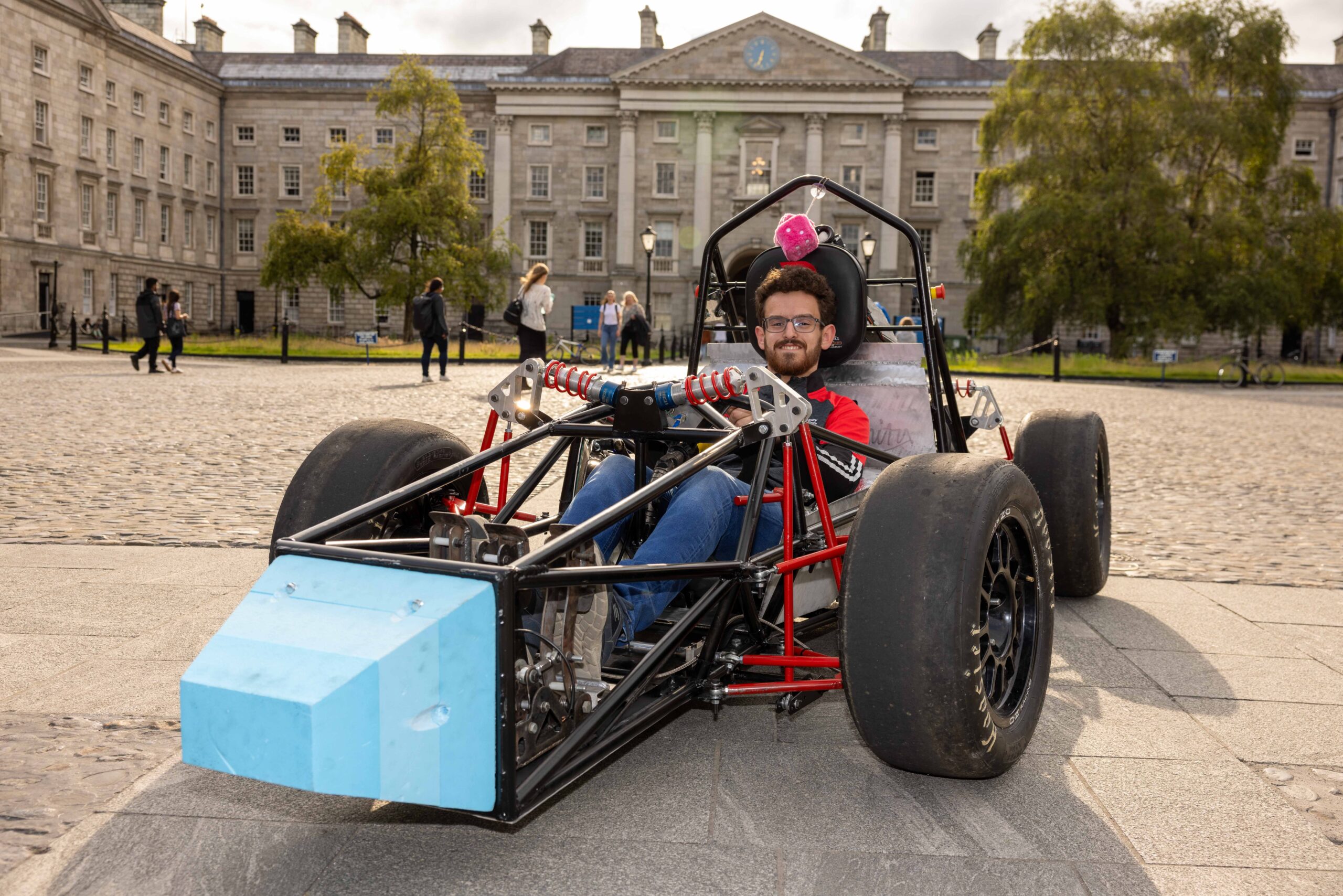A Trinity graduate and member of the EIRSAT-1 team which launched Ireland’s first satellite into space last week said that his experience in Formula Trinity helped prepare him for the practical work involved in the satellite project.
Pádraig McDermott, a physics graduate, joined the EIRSAT-1 team in October after beginning his PhD in space science at University College Dublin (UCD), where the project is based.
His role involves satellite operations and working on the ground segment, handling the radios and antennas used to communicate with the satellite.
Having been a senior engineer with Formula Trinity last year, taking the lead on electronics as the team constructed a formula one car from scratch, McDermott credited the experience with teaching him the necessary practical skills for EIRSAT-1.
“While working on the Formula Trinity car I learned how to effectively work as part of a team and solve complex engineering problems. I use these skills every day working on EIRSAT-1.”
Formula Trinity is a student-led project that designs and builds race cars. Students compete globally with their formula-style race car in circuit racing events, testing their engineering. Formula Trinity was founded as a branch of the international Formula Student organisation.
Educational Irish Research Satellite-1 (EIRSAT-1) was built as part of a joint research project by academic professionals and over 50 students at UCD.
As a collaborative project, it aims to advance education in engineering and space science among students in Ireland.
The satellite, about the size of a shoebox, took off from Vandenberg Air Force Base in California on board a Falcon 9 SpaceX rocket on December 1, becoming Ireland’s first-ever satellite.
McDermott told Trinity News about the experience of working on the satellite’s operations and space exploration in Ireland.
“Operating the satellite involves looking at the signals it sends to make sure it’s healthy, sending commands to the satellite, and downloading scientific data from the satellite,” he said.
With the support of the European Space Agency (ESA), EIRSAT-1 will carry out three experiments while in space. The first will detect the “high energy radiation that is emitted when stars explode in supernovae” with a gamma ray detector, McDermott explained.
“Gamma Ray Bursts are also sometimes produced at the same time as gravitational waves so astrophysicists are very interested in detecting them. Gamma rays are absorbed by the earth’s atmosphere so they can only be directly detected by satellites such as EIRSAT-1.”
The second experiment will measure the thermal properties of two materials designed for spacecraft. These materials were developed by ENIBO, an Irish company aiming to “redefine the performance, function and value of metals across a multitude of industries and sectors”.
The third experiment is an algorithm called wave-based control which will control satellite orientation using the Earth’s magnetic field. This is the first time wave-based control will be used in space.
The development and launch of EIRSAT-1 is a historic moment for Ireland. This landmark satellite is the first to be fully developed and launched as an Irish satellite.
The space industry has long been competitive, but in recent years, the industry has grown exponentially. The sophistication of technologies, public and private investments, and ‘rising demand for space data’ all play a role in revolutionising the modern global space sector.
For EIRSAT-1 to be launched, Ireland had to change its laws on space exploration. In 2022, the Oireachtas ratified the United Nations Treaty on Principles Governing the Activities of States in the Exploration and Use of Outer Space, which provides a framework for international space law.
McDermott notes the “growing Irish Space sector” and the importance of the EIRSAT-1 in setting a precedent for the future of independent Irish space research and exploration. These changes spearheaded by EIRSAT-1 will make it easier for Irish satellites to be launched in the future.
To students looking to work in the space industry, McDermott advised seeking summer internship opportunities in the sector.
“I did an internship with EIRSAT-1 in the summer of my second year and it really helped me figure out what I wanted to do after my degree. It also helped when I was applying for PhD funding because I could say that I had research experience in the field.”






